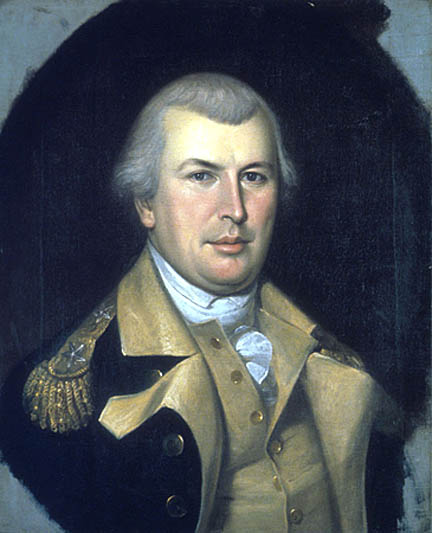
 |
||||||||||
NATHANAEL GREENE 1742-1786 Charles Willson Peale, from life, 1783 Oil on canvas. H 23, W 19 in (H 58.4, W 48.3 cm) Independence NHP INDE 14055
|
||||||||||
| About this Portrait: Charles Willson Peale recognized the public interest in Greene's military success. He decided early on to have Greene's portrait in his collection of great men. Previously, the artist had painted both Greene's and his wife's miniature portraits (both now unlocated). Stylistically, the museum portrait is typical of the artist's early 1780s work. Greene's hair is painted in wispy lines, his flesh tones are highlighted in Naples yellow, and his upper eyelids are incised with heavy lines. After finishing the portrait, Peale painted a replica (now at New Jersey's Montclair Art Museum) and sent it to London to serve as the basis for a mezzotint engraving. Eventually, the portrait was engraved by American James Trenchard and published in the September 1786 issue of the Columbian Magazine. Peale included the Greene portrait in his October 13, 1784 Freeman's Journal and Daily Advertiser announcement of the museum's collections. Later, Peale's son Rembrandt copied the portrait twice, possibly for display in the family's Baltimore and New York museums (now at the Maryland and Rhode Island historical societies, respectively). Rembrandt painted a copy of the Greene portrait (owned by the Maryland Historical Society) around 1795 for use during a patronage trip to Charleston, and for the Baltimore Peale Museum. Ownership History: Listed in the 1813 Peale Museum catalog. Purchased by the City of Philadelphia at the 1854 Peale Museum sale. |
||||||||||
|
|
||
|
Note: Prev/next are in alphabetic order within their respective theaters. |
||
Last Modified: